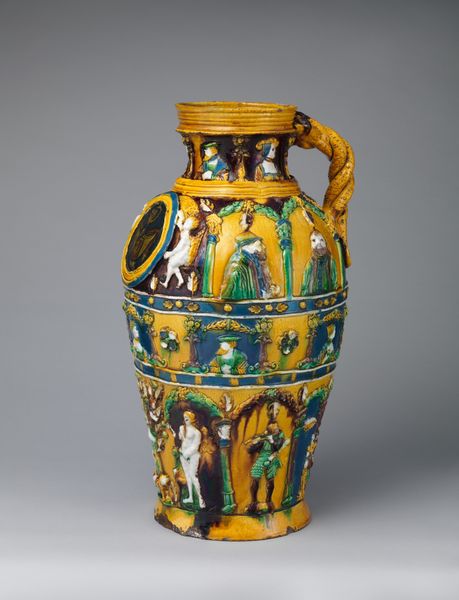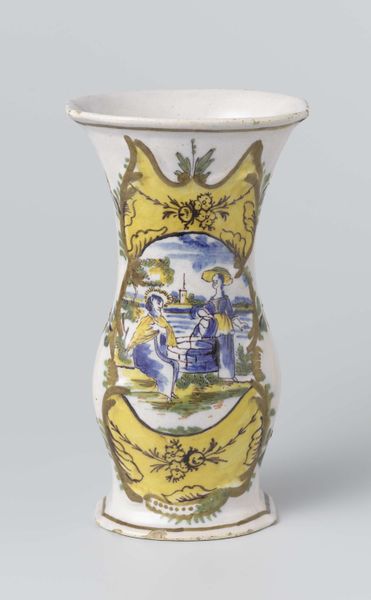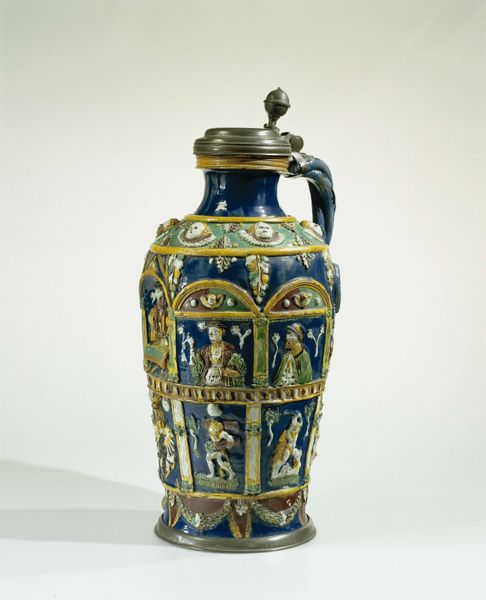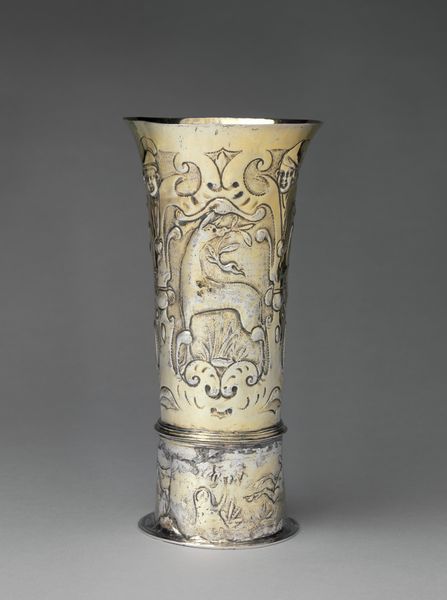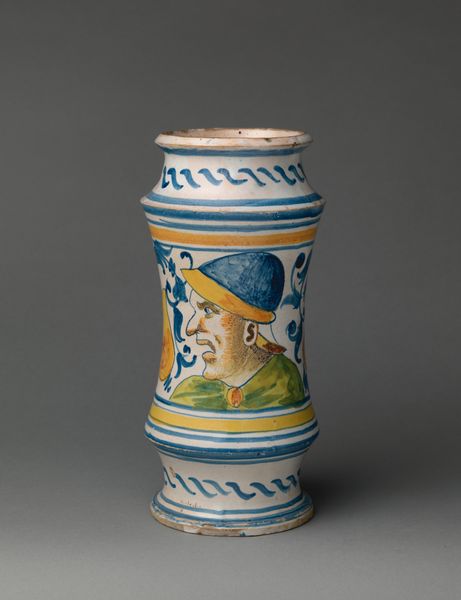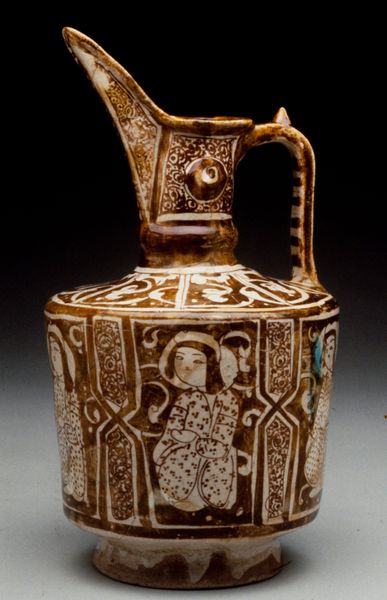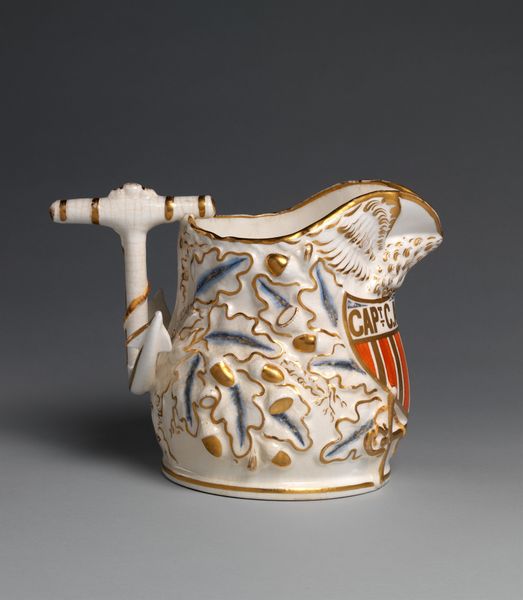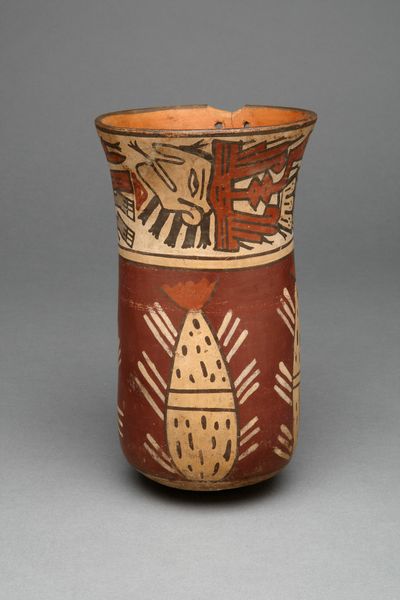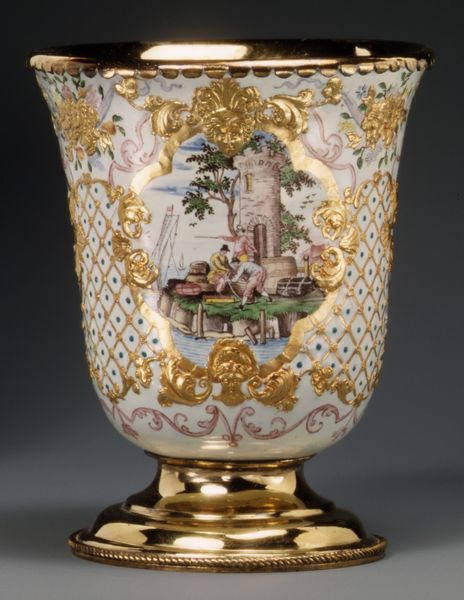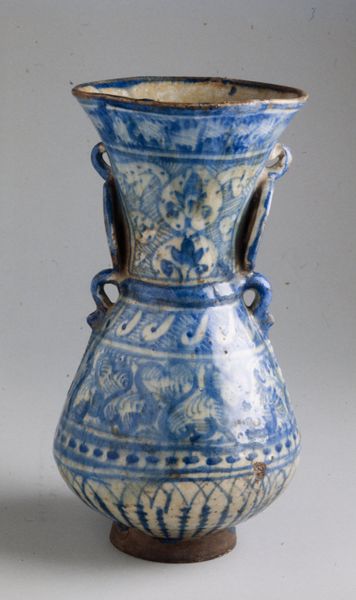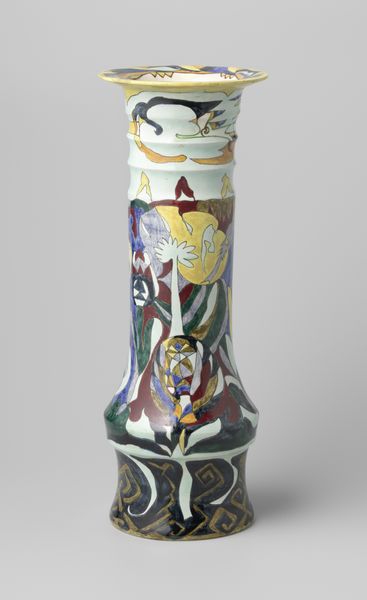
ceramic, sculpture
medieval
ceramic
11_renaissance
sculpture
ceramic
nostalgic styling
decorative-art
Dimensions: Height: 14 in. (35.6 cm)
Copyright: Public Domain
This Jug was made by Paul Preuning around the mid-16th century. Notice the miniature buildings perched atop, reminiscent of a fortified town. Such architectural motifs were not merely decorative; they symbolized security, prosperity, and the communal spirit of the era. Consider the ‘hortus conclusus,’ or enclosed garden, a recurring theme in medieval art, representing paradise or purity. Preuning's miniature village evokes a similar sense of enclosure and protection, a subconscious yearning for safety amidst the uncertainties of the world. Interestingly, these architectural elements echo in different forms across time. From the walled cities depicted in ancient Near Eastern reliefs to the fortified castles of the medieval period, architecture often served as a potent symbol of power and defense. Like a recurring dream, the symbolism of architecture persists, evolving with each age while still rooted in our primal need for shelter and community. This piece is a testament to how cultural memory shapes artistic expression, inviting us to delve deeper into the shared human experience.
Comments
No comments
Be the first to comment and join the conversation on the ultimate creative platform.
